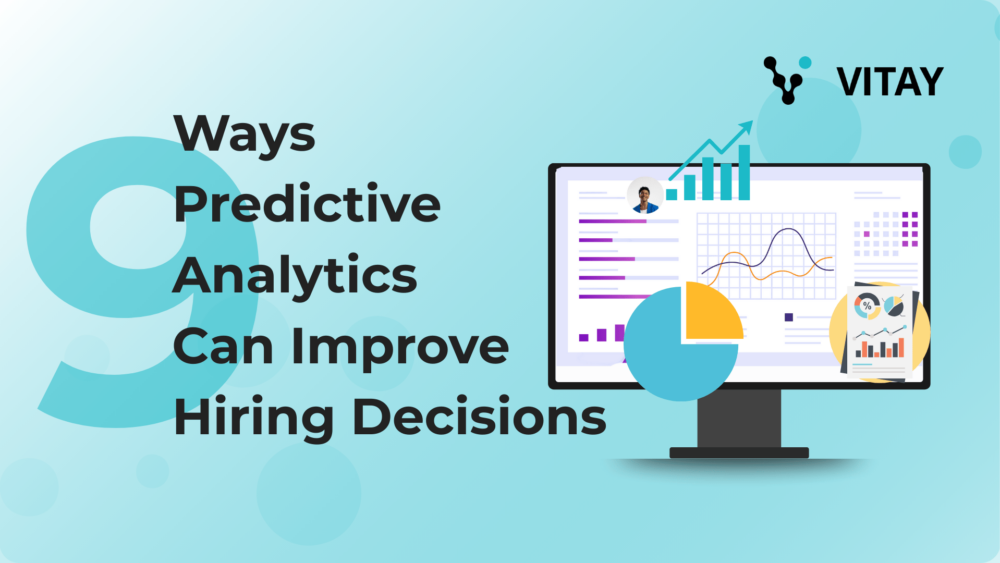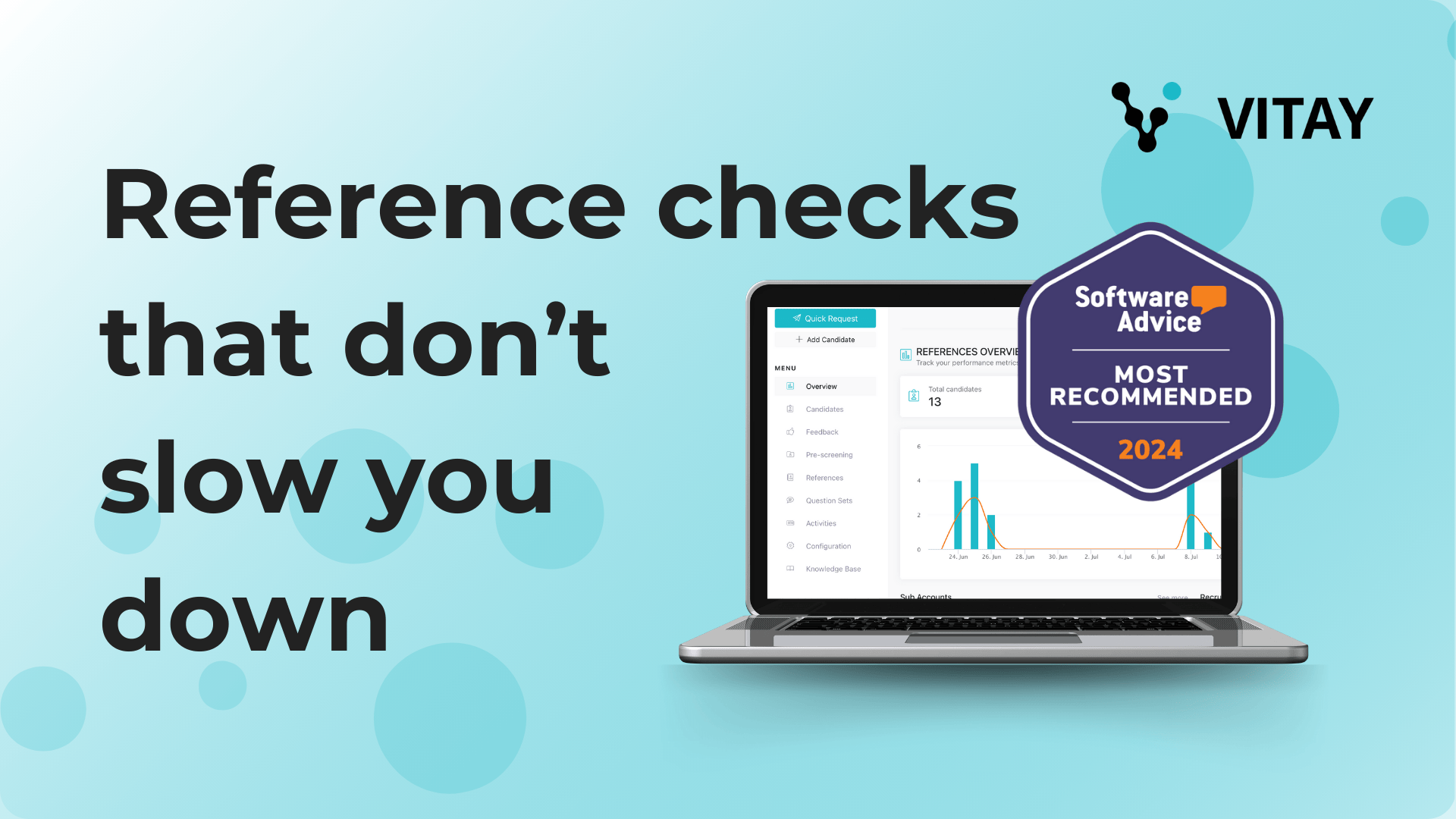Hiring today is more complex than ever, and gut instinct just doesn’t cut it anymore. That’s where predictive analytics in recruiting comes in with a data-powered way to help hiring teams make faster, smarter, and more confident decisions.
What is predictive analytics in recruiting?
Predictive analytics in recruiting is the use of data and algorithms to forecast hiring outcomes. Instead of relying on surface-level info, predictive tools spot patterns in past data to help you find candidates likely to perform well and stay longer.
Let’s walk through nine practical ways predictive analytics can make your hiring process more effective and efficient.
1. Moves Beyond Resumes & Gut Feel
It’s easy to fall for a polished resume or a good first impression. Predictive analytics helps you go deeper when analyzing assessment scores, work history, and real results to pinpoint who’s truly a strong fit for the role.
2. Reduces Bias in Hiring
Bias isn’t always intentional, but it can sneak into decision-making. Predictive tools use consistent criteria and remove subjectivity from early stages, helping your team focus on skills and experience, not assumptions.
3. Increases Quality of Hire
The data doesn’t lie. Companies using predictive analytics often see better performance and longer retention from new hires. When candidates match proven success indicators, everyone benefits.
4. Forecasts Future Hiring Needs
Don’t wait until there’s a staffing crunch. Predictive tools look at workforce trends and your business growth to help you plan ahead so you’re ready before the need becomes urgent.
5. Speeds Up Time to Hire
Manual screening takes time. Predictive analytics can pre-rank candidates, flag top performers, and reduce time spent on early-stage reviews. That means roles get filled quicker, without sacrificing quality.
6. Enhances Candidate Engagement
A smooth, personalized experience goes a long way. Predictive tools help tailor communication and follow-ups based on how candidates interact with your brand, keeping them engaged and informed.
7. Improves Retention & Reduces Turnover
Hiring someone who checks the right boxes on paper isn’t always enough. Predictive analytics highlights deeper signals, like alignment with company culture or work style, to improve long-term fit.
8. Identifies & Engages Passive Candidates
Not every great candidate is actively job hunting. Predictive tools can track online behavior and professional activity to surface passive talent who may be open to the right opportunity.
9. Builds Agility & Personalization Over Time
Predictive models get better as they learn from your past hiring patterns. Over time, your recruitment process becomes more agile, personalized, and consistently aligned with what success looks like in your org.
Real-World Examples of Predictive Analytics in Recruiting
To better understand how predictive analytics works in action, here are a few examples inspired by how leading organizations are using it to refine their hiring strategies:

Lead Health Reached Top 10 Healthcare Staffing Agency
Lead Health, aiming to deliver tailored healthcare workforce solutions, utilized Vitay’s technology to streamline processes like reference checks and workforce management. This integration and use of predictive analytics to achieve operational excellence contributed to their recognition as a top 10 healthcare staffing agency.
Advanced Care Group Identifies Suspicious Candidates
Advanced Care Group, specializing in healthcare staffing, faced challenges with manual reference checks that were time-consuming and prone to delays. By implementing Vitay’s automated reference checking tool, they streamlined their process, reducing the average time to receive references to 24 hours. Notably, Vitay’s fraud detection feature helped them identify a suspicious applicant, leading to further investigation and legal action. This case underscores the importance of efficient and secure reference checking in healthcare recruitment.
Getting Started with Predictive Analytics in Recruiting
Thinking about integrating predictive tools into your process? Here’s a simple starting point:
Choose a platform that supports predictive analytics
Look for recruiting software or ATS tools that offer built-in predictive analytics or easily integrate with third-party tools. Platforms that allow real-time data analysis, candidate scoring, and workflow automation are ideal. Vitay, for example, offers insights that speed up reference checking and improve decision-making.
Clean and organize your historical hiring data
Good predictions rely on good data. Start by collecting and cleaning your past hiring data, including candidate sources, interview outcomes, performance reviews, and tenure. Eliminate duplicates or irrelevant entries, and make sure your data is standardized for easy analysis.
Train your team on how to interpret and act on insights
Predictive tools are only effective when your recruiters and hiring managers know how to use them. Run internal sessions to explain how to read candidate scores, interpret recommendations, and use the data to supplement human judgment.
Start with one high-impact role and scale from there
Rather than overhauling your entire recruitment process at once, apply predictive analytics to a single role or department where hiring is frequent or challenging. Test, measure, refine your approach, then expand gradually across other teams.
How Predictive Analytics Supports DEI Goals in Hiring
While diversity, equity, and inclusion (DEI) have long been priorities for many organizations, turning those values into measurable outcomes can be a challenge. Predictive analytics helps bridge that gap by introducing fairness and consistency into each stage of the hiring process.
Rather than relying on subjective judgment, predictive models use objective data points to evaluate all candidates by the same standards. This levels the playing field for underrepresented groups and minimizes the impact of unconscious bias, especially in resume reviews and early screening.
Additionally, predictive tools can help identify potential gaps in your hiring funnel. For example, if diverse candidates are consistently dropping off after a certain interview round, analytics can flag this trend, allowing your team to make adjustments to improve equity.
When implemented thoughtfully and ethically, predictive analytics doesn’t just optimize efficiency. It actively supports more inclusive hiring practices.
Common Mistakes to Avoid with Predictive Recruiting
While predictive analytics offers huge advantages, it is not without pitfalls, especially in the early stages of implementation. One common mistake is relying solely on the data without human oversight. Predictive tools should support decisions, not replace sound judgment.
Another misstep is feeding poor-quality or biased data into the system. If the data reflects past biases, the predictions will too. Organizations also sometimes skip the step of educating their hiring teams. Without proper training, insights can be misunderstood or misused.
Lastly, trying to do too much too quickly, such as applying predictive models to every role at once, can overwhelm your team and lead to inconsistent results. Start small, learn from early experiments, and scale gradually.
Conclusion
Predictive analytics in recruiting isn’t just a trend, it’s a game-changer for talent acquisition teams looking to make better decisions with less guesswork. It helps reduce bias, improve quality of hire, and stay ahead of future needs.
Want to see how predictive insights can support your hiring goals? Book a demo of Vitay to see how recruiters save hundreds of hours on reference checks weekly.





Comments are closed.